Storage of hazardous substances
Environmental protection and compliance with legal standards are essential pillars in the management of hazardous substances in your warehouse. This requires specific approaches for each risk category – from preventing water contamination to controlling fire risk and safely storing batteries. Through adapted technical solutions and compliance with regulations, risks can be effectively minimized.
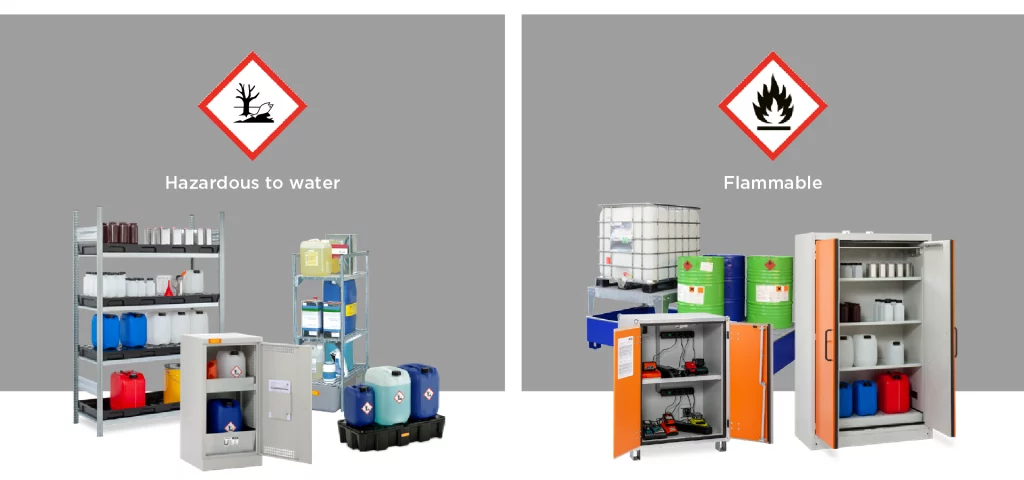
1. Water Safety

Storing hazardous substances with the potential to pollute water requires strict adherence to isolation and collection standards. According to European water resource standards, retention systems must provide collection volumes of at least 10% of the total capacity of hazardous substances stored or 100% in protected areas. Corrosion-resistant materials such as GRP (glass fiber composite material) or polyethylene (PE) are preferred due to their durability and chemical inertness. For example, Z-40.12-227 certified tanks, available in the EUROFIT portfolio, ensure long-term impermeability and are ideal for oily or acidic substances. Regular monitoring of the condition of retention tanks and correct classification of hazardous substances are mandatory to avoid sanctions and protect water resources.
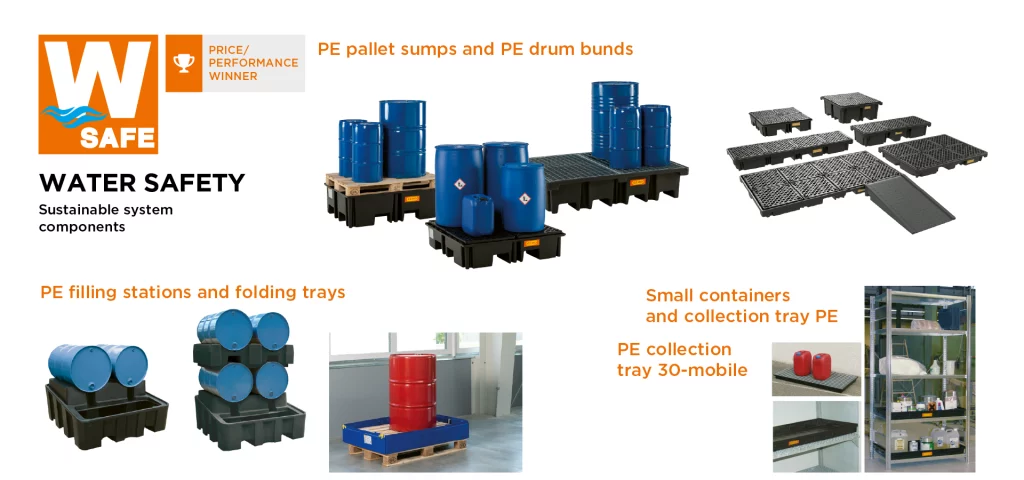
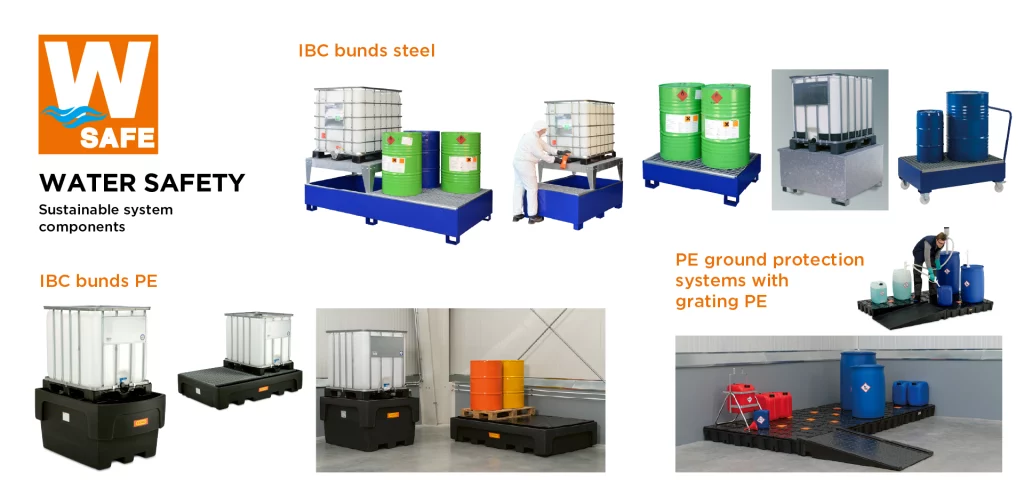
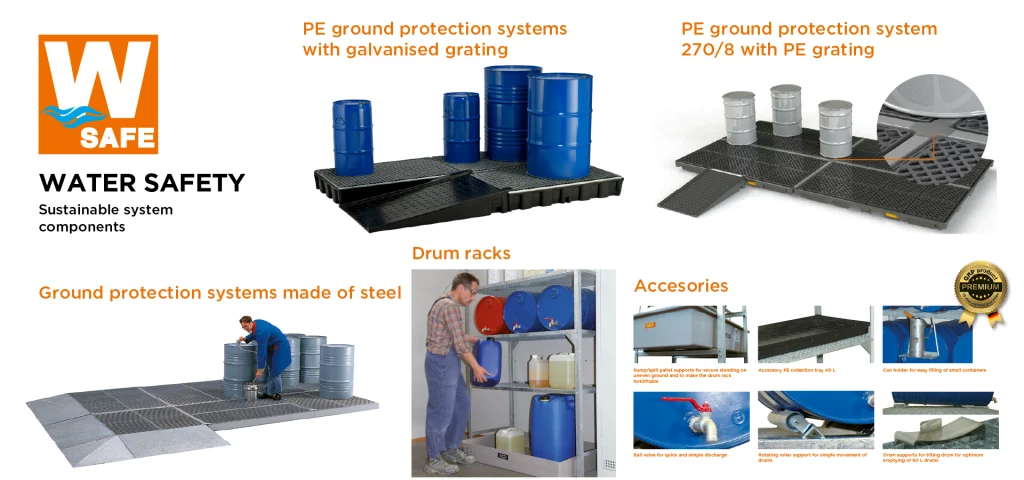
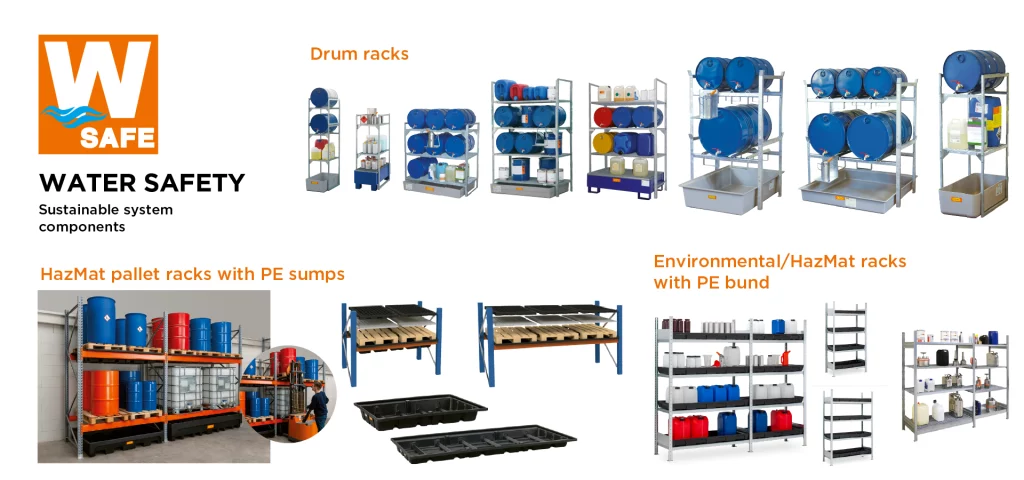
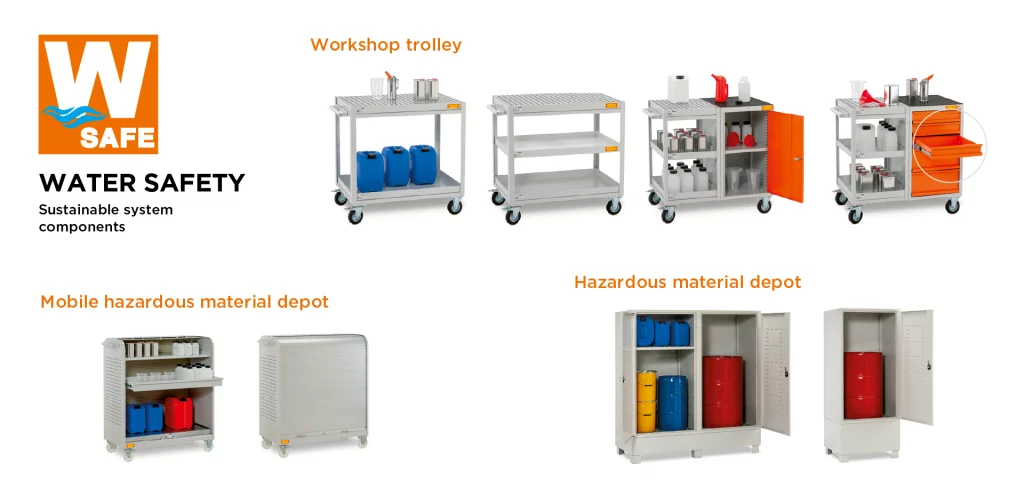
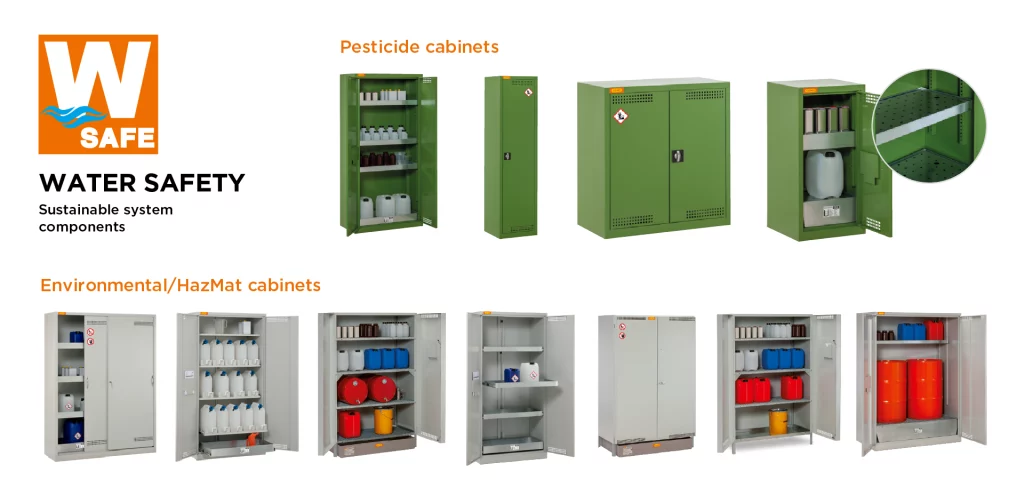
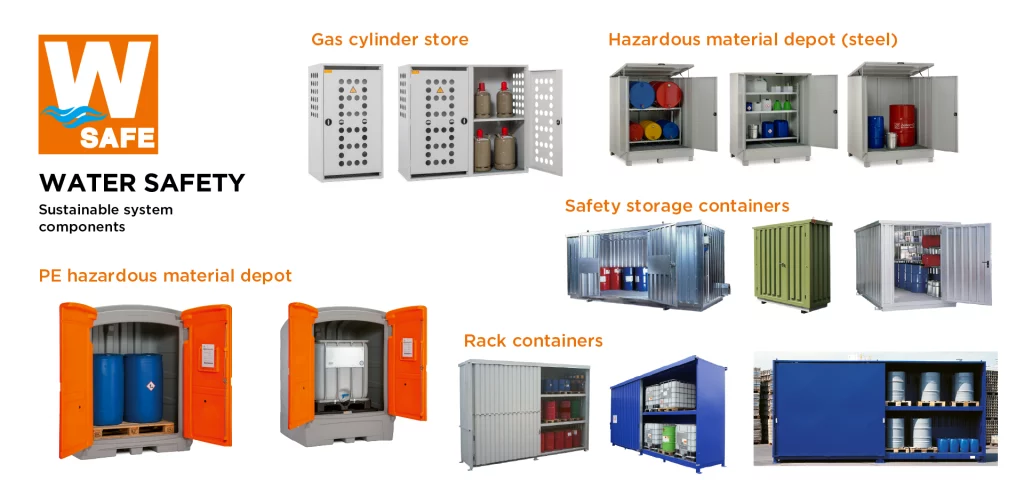
2. Fire Safety

Fire safety in warehouses with flammable substances requires a mix of fire-resistant materials and automatic smoke detection systems. The F30-F90 standard specifies the fire resistance of structures for 30-90 minutes, essential for rooms storing liquids with a low flash point (e.g., gasoline, solvents). According to TRGS 510 (Technical Rules for Hazardous Substances), warehouses must include explosion-proof ventilation, grounding equipment and safety distances from buildings. EUROFIT solutions, such as metal containers with thermal insulation or sealed shelves, meet these requirements and allow the storage of flammable goods without the risk of fire spreading. The use of automatic extinguishing systems and regular staff training complete the preventive measures.
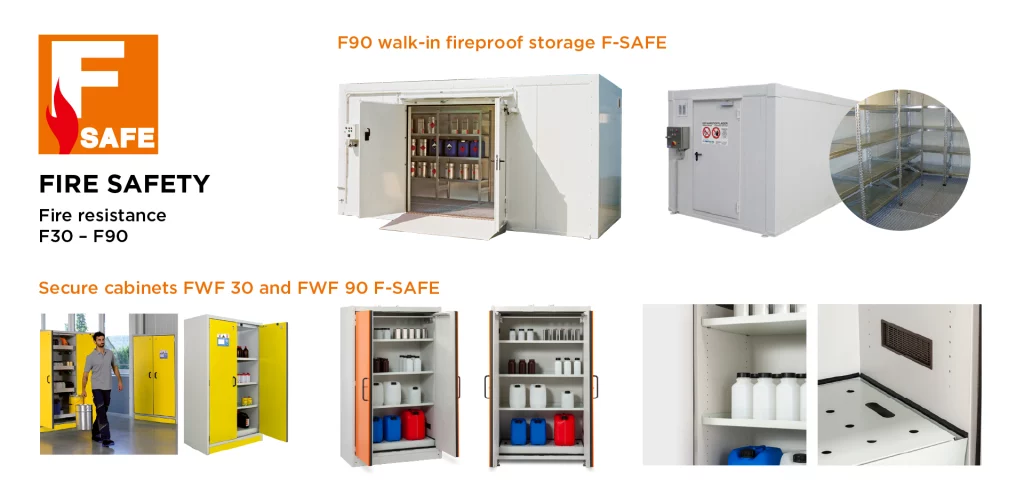
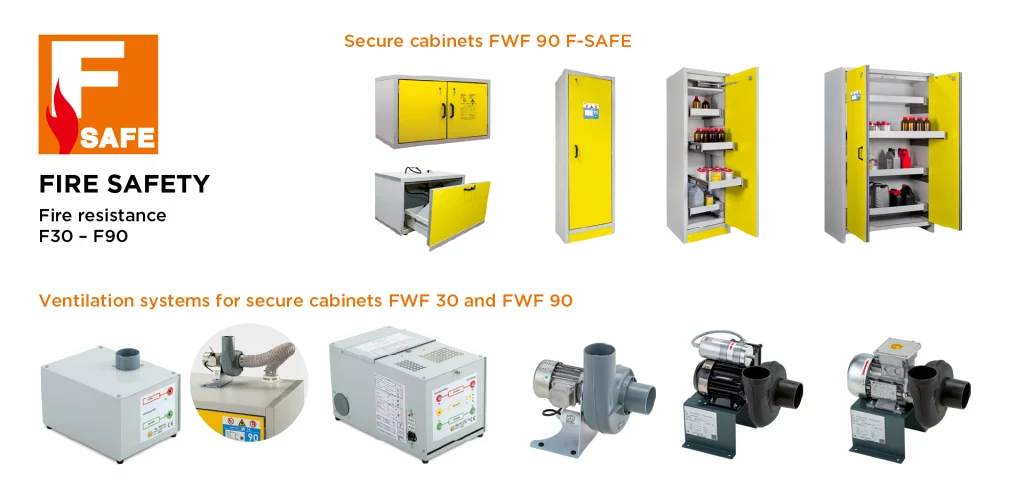
3. Battery Safety

Lithium-ion batteries, although extremely efficient, pose risks of overheating and fire due to their sensitivity to high temperatures or short circuits. Their storage requires well-ventilated, dry and thermally insulated spaces, away from flammable materials. It is recommended to use special cabinets with passive ventilation and avoid excessive stacking. In addition, defective or damaged batteries must be immediately isolated in non-conductive containers, according to the manufacturers’ instructions. EUROFIT offers adaptable modular systems, such as shelves with integrated collection trays, which reduce the risk of flammable gas accumulation and ensure controlled access.
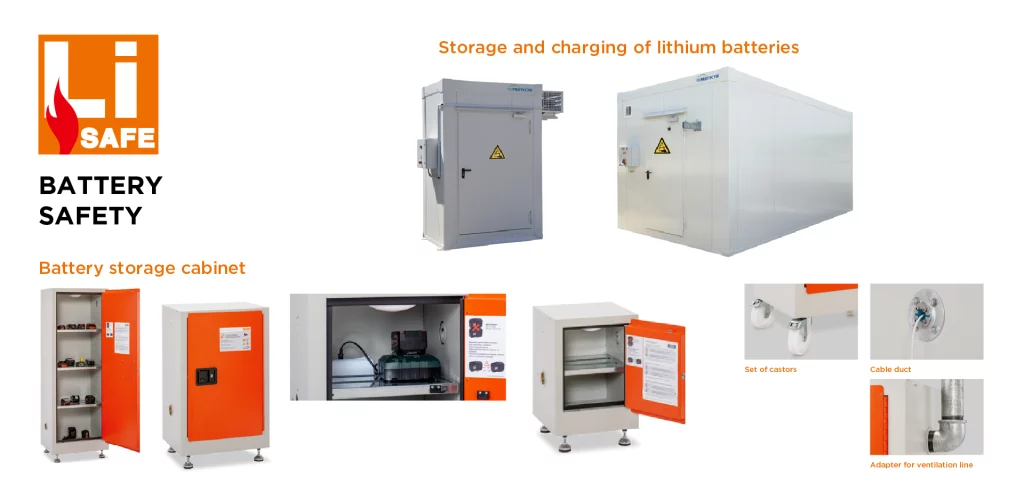
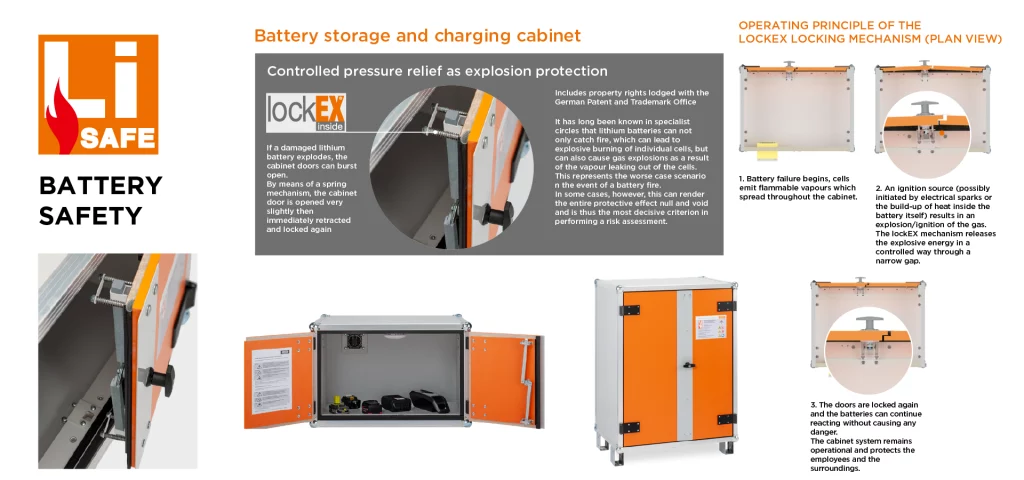
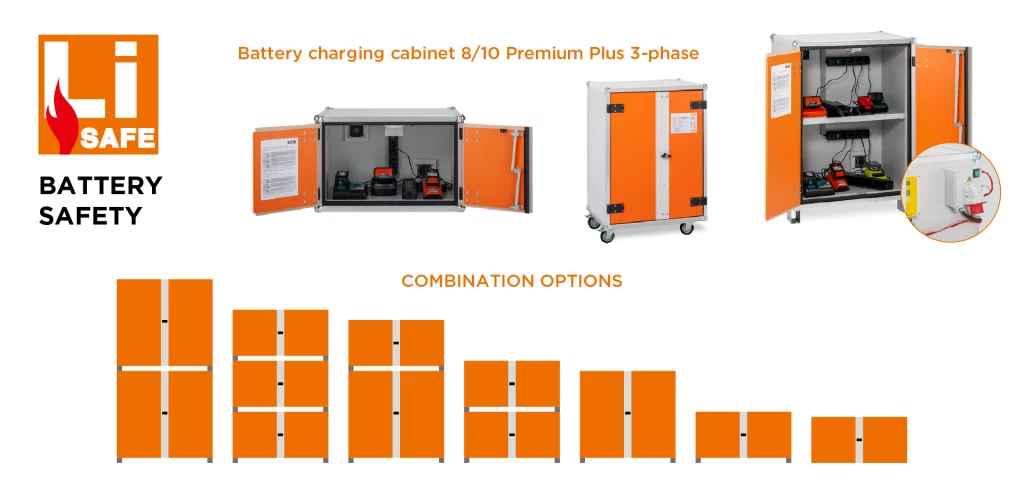
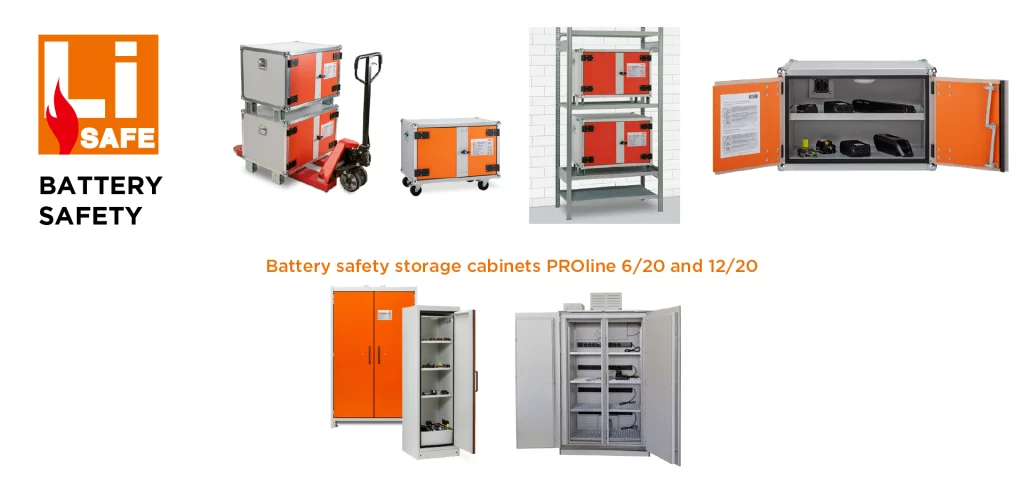
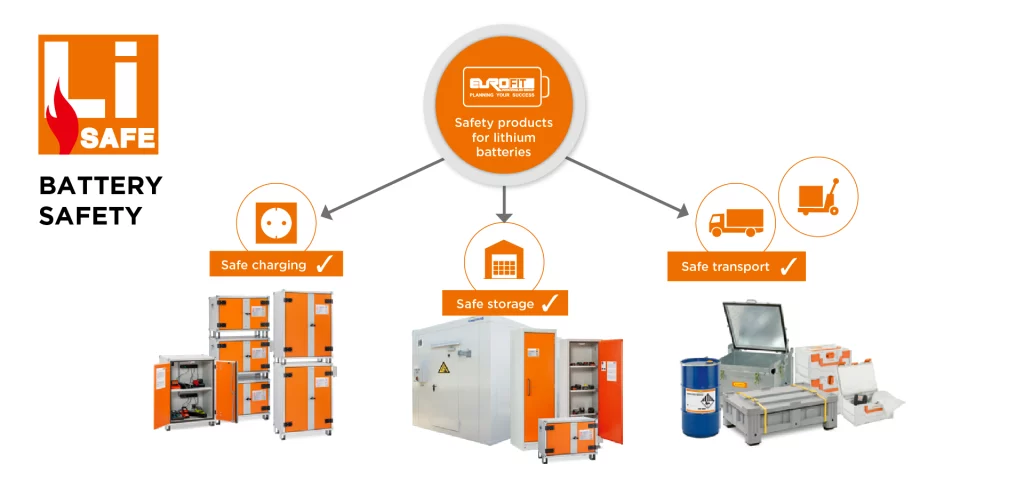
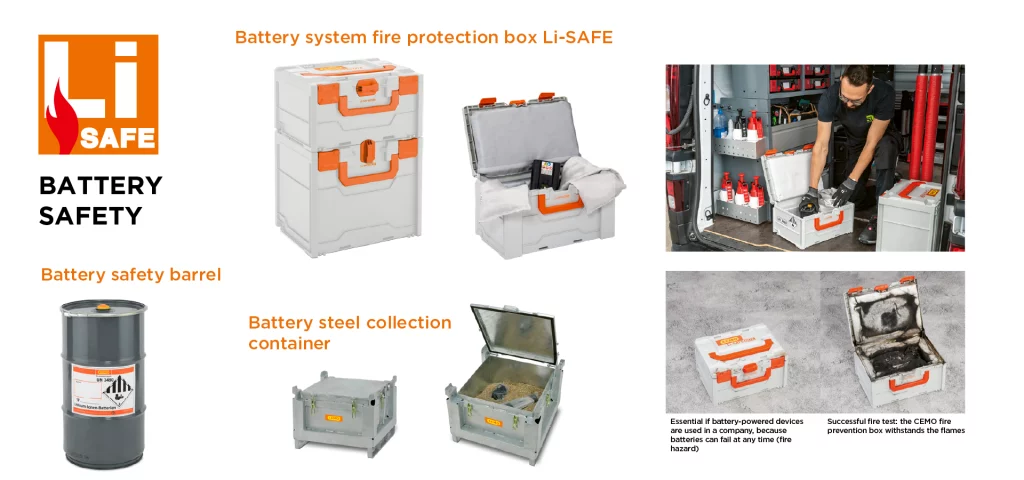
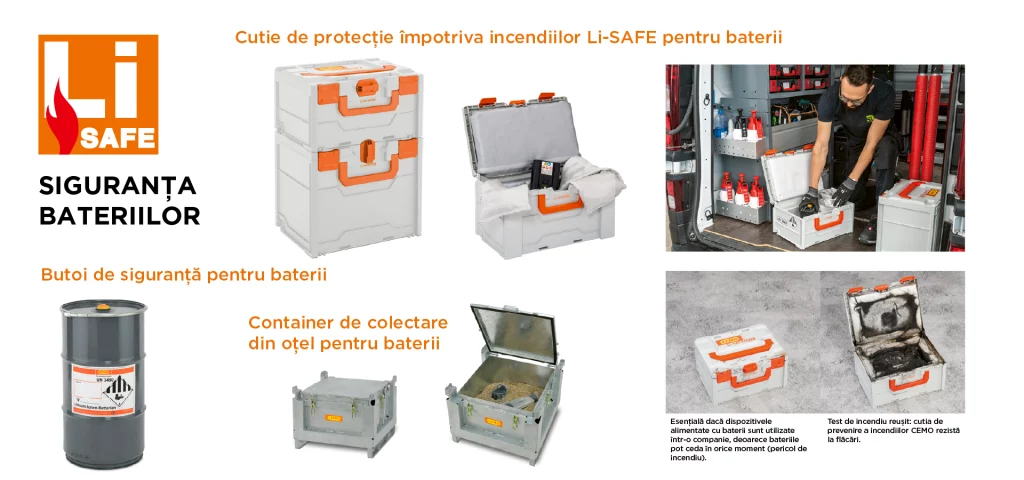
Conclusion
The storage of hazardous substances is a complex responsibility, but manageable through awareness and technical solutions. Every aspect – from the tightness of the trays/retention tanks to the choice of fire-resistant materials – all contribute to the prevention of accidents. EUROFIT is here to support you with internationally certified products and specialized warehouse safety consulting. Contact our team via contact page to receive personalized solutions tailored to your needs and applicable standards



